| Homepage | Timeline | Maps | A-Z index | Learning |
The royal family at Amarna
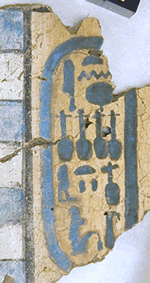 |
Nefertiti, full name: Neferneferuaten Nefertiti the 'great wife of the king'
UC 2261, wall painting fragment from the palace at Amarna see depictions of Nefertiti in the Petrie Museum |
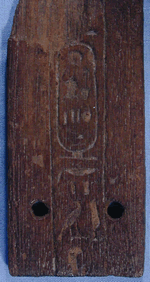 |
Kiya Reeves 1988 (discussing fragment with the name of the queen in the British Museum, mention of the fragments in the Petrie Museum). Kiya had a special titulary: the beloved great wife of the king of Lower and Upper Egypt, living in truth. Year 11 is her last dated appearance; soon after that she might have died (van Dijk 1997: 36) UC 24283 (Samson 1978:
118-119, pl. 60; click on the picture to see a reconstruction of the
inscription) |
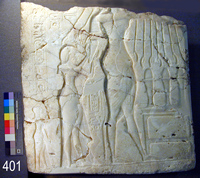 |
the oldest daughter: Merytaten She is often show as first daughter behind Akhenaten and Nefertiti. UC 401 (Samson 1978: 44, pl. 20) (other objects with her name: UC 589, UC 592) |
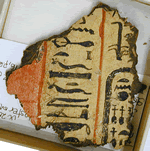 |
the second daughter: Meketaten
UC 2287 wall painting fragment with the name, title and filiation of Meketaten (from the name only Maket survived) |
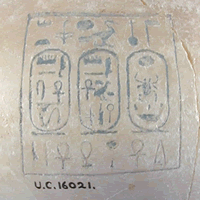 |
the third daughter: Ankhesenpaaten (later Ankhesenamun The wife of king Tutankhamun UC 16021, vessel found at Gurob with the names of Tutankhamun and the name of Ankhesamun; other fragment with her name: UC 600 |
| Nefernefruatentasherit. The fourth daughter. She is not very well attested. | |
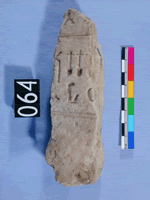 |
Nefernefrure. The fifth daughter. There is a seal impression from Amarna, which mentions her tomb chamber (Khouly/Martin 1987: 8). Therefore it can be assumed that she died early.
UC 064 limestone fragment with part of the name Nefernefrure |
| Setepenre. The last daughter. She is not very well attested. | |
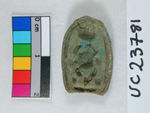 |
Tutankhaten. A king's son Tutankhaten is mentioned on a block found at Hermopolis. Tutankhaten later became king and his name was then changed to Tutankhamun. |
|
Baketaten. King's daughter with unknown position. She
is mentioned on wine dockets (van
Dijk 1997: 37)
|
|
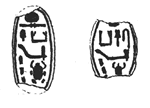 |
Semenkhkare King at the end of the Amarna period; only known from a few sources. On some monuments he is mentioned together with Merytaten. Rings Petrie 1894: pl. XV, 103, 104 |